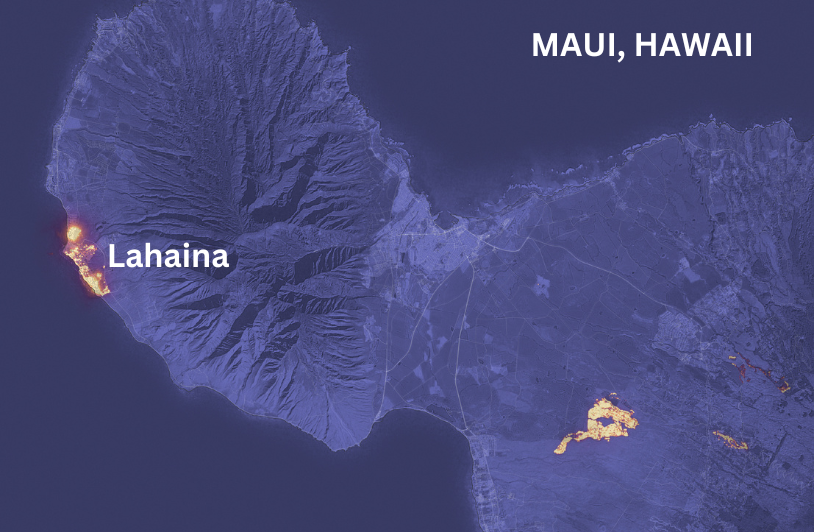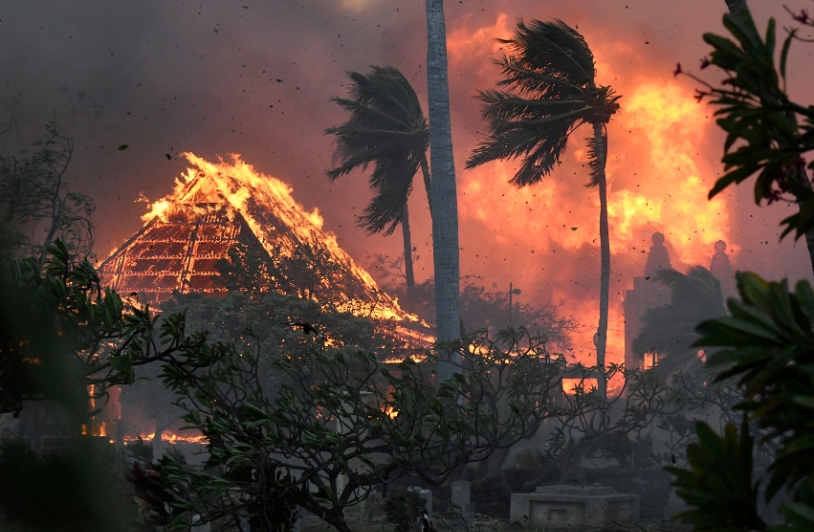Deadly Mix of Factors Has So Far Killed Over 80 People
Earlier this week, Maui, Hawaii began to experience the deadliest wildfires in its history, killing at least 53 people as of this August 12, with thousands being forced to evacuate.
These were wind-fueled wildfires, but that’s not the sole reason why Hawaii is facing this tragedy. In fact, Hawaii has become more susceptible to wildfires as a result of numerous environmental factors over the past 30 years, such as an increase in temperatures and lack of rainfall.
Since 1990, “rainfall at selected monitoring sites has been 31 percent lower in the wet season, and 6 percent lower in the dry season, according to work published in 2015 by researchers at the University of Hawaii and the University of Colorado.”
All over the world, constant changing weather patterns and mistreated forests — due to the lack of care from humans — help to create conditions appropriate for wildfires to ignite. In many cases, these fires lead to destruction and suffering as we’ve seen during this summer’s entirety.
According to reporting by The New York Times, “Hawaii’s landscape is changing in other ways, beyond becoming drier. As wildfires become more common, some native vegetation, which is poorly adapted to fire, has been destroyed. In other places, including the area around Lahaina, longstanding sugar cane farms stopped operating around the 1990s; the land stopped getting irrigated.”
“In the place of those crops and native vegetation, dry and invasive grasses spread. Those grasses that are better able to regrow after a fire, but are also quick to ignite. That has contributed to fires spreading more quickly.”
In short, Hawaii is covered with plants, grass and vegetation that is now highly flammable.
Hurricane Dora was undoubtedly a main reason for the Maui wildfires as well, even though it was roughly 800 miles off the coast of Hawaii, passing completely by Tuesday. Registered as a Category 4 storm, it created wind speeds at above 60 miles per hour, which pushed the fire to spread rather quickly.
Abby Frazier, a climatologist at Clark University who has extensive knowledge regarding Hawaii, told the New York Times that a couple of aspects directly impacting Hawaii are:
- A weather pattern known as La Niña proving consistently weaker
- Thinning clouds looming over Hawaii

La Niña —“a climate pattern that describes the cooling of surface-ocean waters along the tropical west coast of South America” — usually leads to heavy rainfall, but slowly, has been giving less rain since 1980. The weaker La Niña’s have not been bringing Hawaii out of drought, and close to 16% of Maui County — where the wildfires have been occurring — is in severe drought with an additional 20% in moderate drought.
Additionally, the increase of temperatures causes clouds over Hawaii to become thinner. Less total coverage of clouds throughout the sky means significantly less rainfall.
The historic town of Lahaina — and former capital of Hawaii during its time as the Hawaiian Kingdom in 1802, which lasted for 50 years — was hit especially hard. The town is known for its 60-foot banyan tree which was set to be a tourist attraction in 1873. It has been burned in recent days.
A federal disaster declaration was issued by the Biden administration, claiming that much necessary aid will reach those in need statewide.
“We’re working as quickly as possible to fight those fires and evacuate residents and tourists. In the meantime, our prayers are with the people of Hawaii, but not just our prayers: every asset that we have will be available to them,”
President Biden made it clear that the federal government would be assisting Hawaii in any way that it can.
“Our prayers are with the people of Hawaii, but not just our prayers. Every asset we have will be available to them.”





